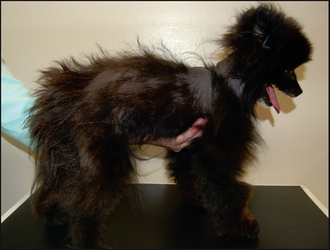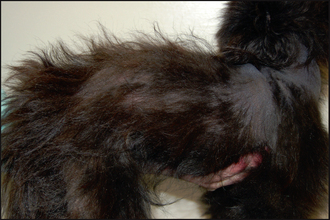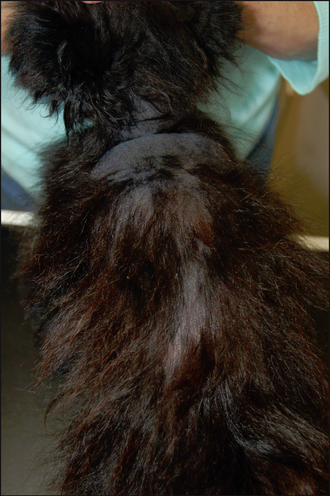24 Alopecia X in a Pomeranian
CASE HISTORY
The history in this case was as follows:
• There was a 12-month history of, initially, thinning of the hair coat over the dorsal neck, with later complete alopecia over the trunk but sparing the head and limbs.
• No polyuria, polydipsia or polyphagia, no weight change, no lethargy and no other signs suggestive of systemic involvement were seen.
• There was no regrowth of hair following 1 month of treatment with levothyroxine at a dosage of 10 μg/kg b.i.d.
• There was no regrowth of hair following 2 months of treatment with melatonin at a dosage of 2 mg t.i.d.
• A routine ovariohysterctomy had been performed after the onset of hair loss, and there had been hair regrowth over the spay wound site.
• There were six other related dogs within the household, none of whom had been affected, although the sire of the affected dog had developed similar symptoms that had remained undiagnosed.
CLINICAL EXAMINATION
There were no abnormalities on full physical examination.
The significant findings on examination of the skin were:






